MARKET OVERVIEW
The global automotive actuators market is an important aspect of the entire automotive industry and is driving progress in modern vehicle performance and functionality. Automotive actuators are an integral part that converts electrical signals into mechanical motion, thereby greatly enhancing efficiency, safety, and overall vehicle performance. As the automotive landscape is constantly being shaped by technological innovation, this market will be at the heart of changes in vehicles.
Over the years, the auto industry has transformed immensely, driven more by high-technology adoption as well as pursuing sustainable solutions for the automobile business. This includes the development and growth of global automotive actuators market that have taken the approach towards increased adoption of automation and electrification of automobiles.
The complexity of systems in vehicles is increasing, hence the actuators required will need to be more precise and operate proficiently in conditions. This will be a rising market, hence the demand of actuators should support the drive towards intelligent as well as connected vehicles. In this regard, the focus remains on electric models and hybrid vehicle models, where the design of automotive actuators will be designed and applied differently.
Now, with growing usage of EVs, actuators especially will be designed to cater more to the needs of these vehicles, such as energy efficiency and thermal management. And what contributes even further to innovation in actuator technology is the necessity to have lightweight components to improve fuel efficiency and reduce emissions. This change will redefine the strategies followed by manufacturers in the global automotive actuators market, forcing them to search for materials and production processes that support the expectations of an emerging industry mainstream.
Integration of driver-assistance systems and autonomous driving technologies will also increase the scope of applications for automotive actuators. These features of adaptive cruise control, automated parking, and lane-keeping assistance are much strict about the requirement for high precision and reliability. Consequently, the competitive environment will be impacted due to the fact that manufacturers are going to design advanced solutions satisfying stringent safety and performance requirements.
As opposed to the technological developments, the regional factors are going to determine the future of global automotive actuators market. Vehicle safety, emissions, and fuel efficiency regulations will vary with different regions thus posing different challenges and opportunities to the industry players. Manufacturers would most likely to offer products catering to the need of different markets by complying to the local regulation while catering for the preferences of the consumers.
The dynamics of the global supply chain in the global automotive actuators market will also be altered as the industry adjusts to the complications faced around the world. Issues regarding materials shortage, logistics hindrances, and strain due to geopolitical tensions will fuel the urgency among stakeholders to look for strategies on building more resilient supply chains. Companies may focus on establishing localized manufacturing facilities and diversify their supplier networks to mitigate potential risks.
In conclusion, the global automotive actuators market will enter a phase of transformative growth that will be driven by the introduction of technological innovation, changing regulatory frameworks, and shifts in consumer demands. This market is set to become an anchor in the automotive sector for many years to come and shape vehicle design and functionality. Its development will reflect the broader trends in shaping the future of transportation, making it an essential space for attention by stakeholders in the automotive value chain.
Global automotive actuators market is estimated to reach $34,463.60 Million by 2032; growing at a CAGR of 5.6% from 2025 to 2032.
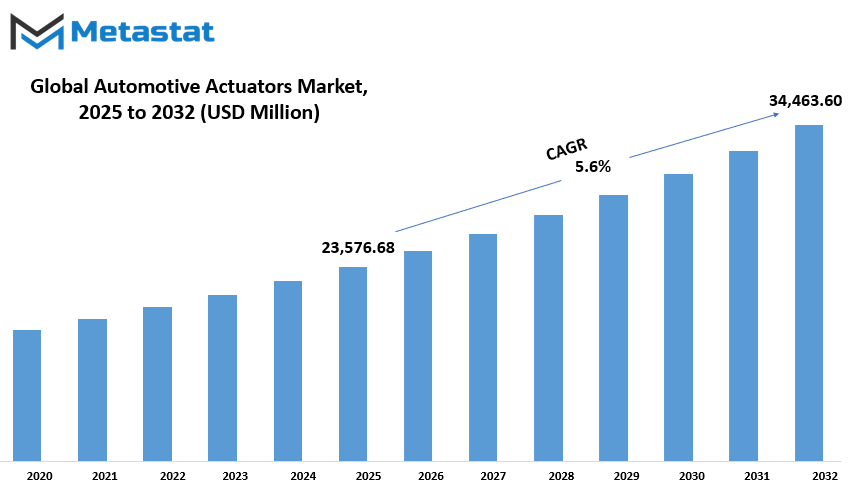
GROWTH FACTORS
Technological advancements, along with the higher demand for electric vehicles, are the primary drivers for the global automotive actuators market. Technological advancements in actuators have led to a higher efficiency and reliability in actuators, hence raising their usage in a vehicle. With electric vehicles becoming popular, the demand for automotive actuators has notably increased.
Electric vehicles require actuators to steer the vehicle, to break, and for controlling different components of powertrain. This increased demand for electric vehicles is going to boost the growth of the market for automotive actuators in the years to come.
However, the global automotive actuators market is also facing some challenges despite these optimistic growth prospects. One major challenge is that of high initial investment required for developing advanced automotive actuators. The manufacturing process and technology used in actuators can be costly, which might deter some companies from entering the market or investing heavily in actuator development. More challenging hurdles may be raised by the sophisticated regulation environment surrounding automobile actuators.
The regulations governing the safety and operation of automotive components, such as actuators, differ from one place to another; hence, car manufacturers cannot provide uniform products throughout the markets. Some factors could lead to a reduced growth rate in the market.
Despite these troubles, the automobile actuators market also provides a great scope for growth. Among all such aspects, IoT is found to be one of the most promising in terms of developments in automobile actuators. Through IoT technology, the devices can communicate and data-share, which serves to give additional functionality as well as performance attributes to the actuators. For instance, IoT-enabled actuators allow a vehicle to give real-time data so that one could improve the overall efficiency of the vehicle. This integration can open new markets in actuator manufacturing and increase market opportunities in the near future.
The global automotive actuators market would grow with increasing demand for electric vehicles and more advanced technology. However, this growth would need to be tapped by overcoming the investment cost barrier and adapting to the regulatory environment. There are exciting ways in which the IoT integration innovations will open avenues; manufacturers who could capitalize on such technology would find increased demand going forward.
MARKET SEGMENTATION
By Product Type
The global automotive actuators market is a dynamically developing sector that has a wide range of product types of high importance in modern vehicles. Actuators control different systems within a vehicle and therefore increase its functionality and performance as a whole. These product categories of the market for automotive actuators can be divided into several key categories, all serving different functions and contributing to the operation of the vehicle.
The most prominent product type in the global automotive actuators market is brake actuators, representing a substantial share of the industry, standing at about $4,585.19 million. Brake actuators are critical in ensuring that braking works correctly for any given vehicle; otherwise, the brakes of a vehicle can lead to serious accidents on the road and, therefore, represent an important aspect of safety on the road. The other major product categories include cooling valve actuators, which regulate the flow of coolant through the engine to ensure that temperatures are kept at optimal working ranges. This results in no overheating of the engine and proper smooth running.
EGR actuators will yet be another important segment controlling the exhaust gas recirculation system that also helps in decreasing the emission and thereby increases the mileage. Grill shutter actuators, for their part, vary the grill shutters of a car to improve on aerodynamics as well as reducing drag. Such will be likely to enhance efficiency in fuel as well as efficiency in performance in a vehicle. Headlamp actuators adjust headlights to allow good visibility especially while driving in the night or through changing road conditions.
The vehicle would be quite comfortably kept for people by having properly working actuators that could either control heating or ventilation systems within a cabin or simply perform air-conditioning. Such system is always useful for those working in different seasons. These help to alter seat adjustment for best possible comfort. Their power windows with actuators really make this important feature vital inside the automobile system. Steering column adjustment actuators are meant to adjust the steering wheel into the driver's preferred position. This enhances ergonomics and comfort while driving.
There are other actuators in the global automotive actuators market that serve specialized functions in various types of vehicles. While these actuators are not as popular as the above categories, they are still very crucial for vehicle improvement in terms of performance and driver satisfaction. The market for automotive actuators is increasing with the development of automotive technology, and these products play a much more significant role in the development of vehicles that are safer, more efficient, and comfortable for consumers to own.
By Actuation
It has witnessed a gradual growth rate, primarily owing to technological up-gradation and the raising demand for efficient and environmentally friendly vehicles. Actuators play a fundamental role in the operation of a vehicle, wherein the machine controls several functions through conversion of energy into mechanical motion. The global automotive actuators market can be categorized into three key types based on the type of actuation: hydraulic, pneumatic, and electric.
Hydraulic actuators are capable of motion as a result of fluid pressure, with the key advantages being in their strength to endure high load levels. In practice, most of these applications find their application in power steering and suspension, and they give way to maximum output in performance in heavy vehicles where robustness is required. On the flip side, hydraulic systems tend to be rather complex in their nature, calling for regular checkups to avert problems that include leakage and contamination of fluids.
Pneumatic actuators are other types that depend on compressed air to generate motion. Pneumatic actuators are lighter and simpler compared to hydraulic systems; hence, their applications depend mainly on where there is an element of space or weight importance. They are frequently used in the braking systems, door actuators, and even adjustable seats. Their response times are faster and normally cheaper compared to hydraulic actuators. However, their force output is lower and therefore they can be used in only less demanding applications.
Electric actuators are widely being adopted in the automobile sector as it offers accuracy, reliability, and can be controlled through electronic systems easily. The actuators operate with electric motors and are extensively used in the automotive industry in the following applications, for example, in the adjustment of windows and seats, as well as even the control of throttle in contemporary automobiles.
Electric actuators are energy efficient, compact in size, and capable of being integrated into other electronic systems within a vehicle. The demand for electric vehicles will fuel growth in the global automotive actuators market for electric actuators, because electric vehicles have become more efficient and more environmentally friendly as an automotive system.
The global automotive actuators market is always developing as the manufacturers are always on the lookout for new technologies and methods to improve the performance as well as efficiency of the vehicle. There are a number of advantages and disadvantages related to each type of actuator, and the same depends upon the specific vehicle requirement. As automotive technologies continue to progress, the demand for more advanced actuators is expected to grow, thereby supporting the growth of the market over the next few years.
By Vehicle Type
The global automotive actuators market represents a critical section of the overall automotive industry; it is central to driving both the performance and functionality of cars. These actuators control almost all mechanical aspects of vehicles, giving them the power to perform functions such as controlling windows and influencing engine functions. The market for automotive actuators is growing, as technology becomes more advanced, and more cars start to apply automated systems.
When analyzing the global automotive actuators market, it is extremely important to have in mind several vehicle types of using these pieces. The markets are divided according to vehicle type into passenger vehicle, light commercial vehicle, heavy commercial vehicle and other vehicles that fit into the stated categories.
Passenger vehicles comprise the largest category in the global automotive actuators market. Such cars use a myriad of actuators to provide better comfort, safety, and convenience for passengers. For instance, actuators may be used for seat adjustment and window operations or door locking systems and air conditioners. More advanced features in consumer vehicles will require actuators in passenger cars, such as automatic parking capabilities or autonomous drive capabilities.
Light commercial vehicles make up another sizable market share. The main purpose of using these light commercial vehicles is for the transportation of goods and services. They need actuators to offer control of functions that allow for efficiency in the use of and enhance safety when handling them. Applications that usually use actuators in light commercial vehicles include cargo doors, adjustment of seats by the driver, and air-conditioning systems.
Heavy commercial vehicles are trucks and buses, which also form an important market segment. These vehicles make use of actuators to carry out essential tasks that support their heavy-duty functions. For example, actuators are applied in the braking system control, steering, and suspension, which are highly crucial for the safe operation of heavy vehicles. With the increase in industries and reliance on heavy commercial vehicles for logistics and transportation, actuators in this sector are likely to grow.
Other vehicles aside from the above vehicle types, for instance, rely on actuators for electric cars because they are specialized to utilize the different configurations and systems applied in power mechanisms. Going forward, there is no doubt that actuation demand for any kind of automobile will only grow as car industries develop their capabilities to assimilate newer technology applications.
By Application Type
The global automotive actuators market is one of the most important sections of the automobile industry. The applications are numerous, and they impact the performance as well as the safety of automobiles. Actuators are also critical parts in regulating several functions inside a vehicle. These include fuel injection up to braking systems. Automotive actuators can be broadly categorized under four major sections based on type of application- Fuel Injection Actuator, Throttle Actuator, Brake Actuator, and Others.
The fuel injection actuators are the most important actuators in a modern vehicle. Their primary function is to regulate the exact quantity of fuel to be delivered to the engine, which directly affects the efficiency of fuel and emissions. They make sure that the engine runs at its best performance by adjusting the fuel flow according to driving conditions and engine requirements. Hence, advanced fuel injection actuators have been a demand, and so are their present-day varieties in an era with the growing importance of environmental protection and strict limits for emissions.
The actuators manage the engine intake control through its throttle. Basically, it helps the output from the engine by receiving signal control from ECU to keep on adjusting its valve to facilitate an appropriate input amount of air inside the engine. It is through such regulation that it achieves smooth acceleration and optimal performance of the engine while maintaining good fuel efficiency. However, with more advanced automotive technology, the call for more precise and responsive throttle actuators is greater.
Brake Actuators, another important product, activate the braking system for automobiles. These actuators ensure smooth and efficient application of braking forces by drivers when they actuate the brake pedal. With growing safety concerns for vehicles, it becomes all the more vital for companies that manufacture vehicles to focus on brake actuators. The factors that are sparking greater demand in this product segment in the global automotive actuators market are integration with advanced safety technologies, including ESC and AEB.
Beside these main actuators, market also has different types of actuators used to control various features found in a car. These will include seat, window, and mirror adjustment systems, climate and automatic parking controls. Although their operations are not quite as crucial for the fuel injector, throttle or brake actuators, they are indispensable for the whole functionality and convenience of modern motor vehicles.
The demand for advanced actuators is expected to go on increasing with the constant evolution of the automobile industry. The demand for more fuel-efficient, safer, and more advanced technology vehicles will propel the growth of the global automotive actuators market.
|
Forecast Period |
2025-2032 |
|
Market Size in 2025 |
$23,576.68 million |
|
Market Size by 2032 |
$34,463.60 Million |
|
Growth Rate from 2024 to 2031 |
5.6% |
|
Base Year |
2024 |
|
Regions Covered |
North America, Europe, Asia-Pacific, South America, Middle East & Africa |
REGIONAL ANALYSIS
This study categorizes the global automotive actuators market in relation to geography and further divides this into several different regions, having each of their dynamics and growth prospect. These include North America, Europe, Asia-Pacific, South America, and the Middle East & Africa, which form a significant chunk of the global market.
It further divides this market in the North American segment into three vital countries: U.S., Canada, and Mexico. All of these countries have unique automotive industries that require actuators. The United States is the most significant automotive actuators market because it has a very strong automobile manufacturing industry and a very high volume of production. Canada and Mexico also have critical positions since they act as an auxiliary source in the North American automobile supply chain with the aid of their manufacturing units and increasing demand for high-tech automotive parts.
Europe is another major automotive actuators market, which comprises a number of countries such as the UK, Germany, France, Italy, and others that fall under the category of Rest of Europe. The European automotive sector is well developed and Germany is among the leading countries in terms of manufacturing and technological innovation. France, Italy, and the UK are also major players in the market, but they manufacture the whole range of products from luxury to economy models. The demand for actuators is driven by a desire for Europe to be increasingly technologically sophisticated and environmentally friendly.
The region has the largest and fastest-growing market for automotive actuators; it comprises countries such as India, China, Japan, South Korea, and the remaining Asia-Pacific nations. The automobile industries in China and Japan are considered major hubs, which have large-scale production of vehicles and technological advancements in the automotive sector. India and South Korea have significant contributions in the market.
Their growth capacities are increasing in automotive manufacturing and growing demand from consumers on vehicles. The region is undergoing a very rapid growth, especially due to the fact that more people have joined the middle-class strata and have started using electric and hybrid vehicles rapidly.
South America, which has Brazil and Argentina and other nations in this continent, is viewed as one of the fastest-emerging automotive markets. Though it is small in comparison with some of the others, South America still offers huge potential for growth. This is, particularly reflected, in Brazil-the biggest automotive market in the region. The vehicle and vehicle part demand will only go up through future years that, in return, will propel further growth within the South America-based automotive actuators market as well.
An emerging automotive market in the world can be known in the regions of Middle East & Africa consisting of GCC, Egypt, South Africa, or any other location of the two geographical regions Middle East and Africa. This region's automotive actuator demand is mainly due to the growth of the country's automotive industry, such as UAE, Saudi Arabia, South Africa, and Egypt. Investments in this Middle East & Africa region in the automotive sector fuel the growth of the global automotive actuators market.
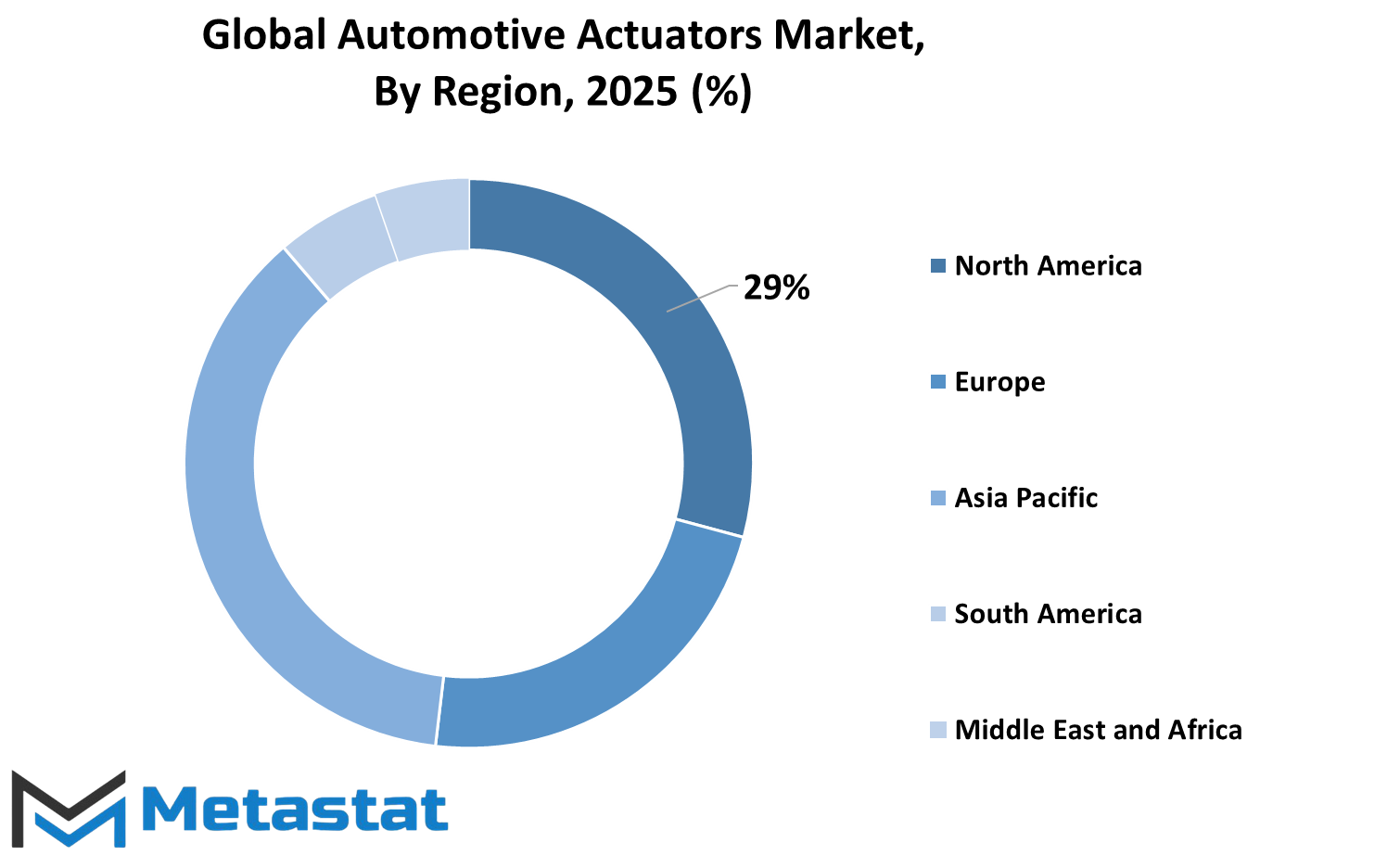
COMPETITIVE PLAYERS
Due to the persistent demand for more advanced vehicle technologies, the global automotive actuators market is steadily growing. Automotive actuators are basic devices that affect the control of many settings, from adjusting a seat, window, or mirror to regulating air through an engine. With advancing technology, this component has become crucial in the improvement of vehicles. The major participants in the global automotive actuators market are some of the world's largest and most recognizable firms producing vehicles. These are at the vanguard of innovative actuator solutions that meet the requirements of modern vehicles.
Major names in the automotive sector, among them, Robert Bosch GmbH, are well-positioned leaders that take pride in supplying actuators. Bosch, being a leader in research and development, specializes in offering high-reliability and long-life actuators. Continental AG, one of the major companies in the market, has its expertise in providing advanced actuator systems widely used in safety and driver-assistance technologies.
Denso Corporation, a Japanese multinational, is another major player in the market offering actuators that contribute to fuel efficiency and reduced emissions in vehicles. Some other major players are Johnson Electric, Rheinmetall Automotive AG, and BorgWarner Inc. These players are famous for their contributions toward making vehicles not only perform better but also environmentally friendly.
APC International, Ltd, Mitsubishi Electric Corporation, and Valeo are also some major manufacturers in the global automotive actuators market. These companies are offering actuators for different applications like powertrain, air-conditioning systems, and braking systems. Other companies include Emerson Electric Co. and Schaeffler AG, which are known for their actuator solutions that help improve the efficiency of vehicles. Hella GmbH & Co. KGaA and CTS Corporation are known for their work in automotive lighting and electronic systems, where actuators play a significant role.
Mahle GmbH, Nidec Corporation, and Knorr-Bremse AG make up the rest of the list. Mahle GmbH specializes in high-performance actuators for engine systems. Nidec Corporation focuses on developing innovative solutions for electric vehicles. Knorr-Bremse AG is the leading company in braking systems that incorporates actuators for vehicle safety.
In conclusion, the global automotive actuators market is a stronghold of the mighty and influential players. The innovations they are producing help push forward the automotive industry, with increased efficiency, performance, and safety of modern vehicles. With an increasing growth trend in the automotive industry, advancements in actuator technology are likely to make these parts even more vital in the future.
Automotive Actuators Market Key Segments:
By Product Type
- Brake Actuators
- Cooling Valve Actuators
- EGR Actuators
- Grill Shutter Actuators
- Headlamp Actuators
- HVAC Actuators
- Power Seat Actuators
- Power Window Actuators
- Steering Column Adjustment Actuators
- Other
By Actuation
- Hydraulic
- Pneumatic
- Electric
By Vehicle Type
- Passenger Vehicle
- Light Commercial Vehicles
- Heavy Commercial Vehicles
- Others
By Application Type
- Fuel Injection Actuator
- Throttle Actuator
- Brake Actuator
- Others
Key Global Automotive Actuators Industry Players
- Robert Bosch GmbH
- Continental AG
- Denso Corporation
- Johnson Electric
- Rheinmetall Automotive AG
- BorgWarner Inc.
- APC International, Ltd
- Mitsubishi Electric Corporation
- Valeo
- Emerson Electric Co.
- Schaeffler AG
- Hella GmbH & Co. KGaA
- CTS Corporation
- Mahle GmbH
- Nidec Corporation
WHAT REPORT PROVIDES
- Full in-depth analysis of the parent Industry
- Important changes in market and its dynamics
- Segmentation details of the market
- Former, on-going, and projected market analysis in terms of volume and value
- Assessment of niche industry developments
- Market share analysis
- Key strategies of major players
- Emerging segments and regional growth potential



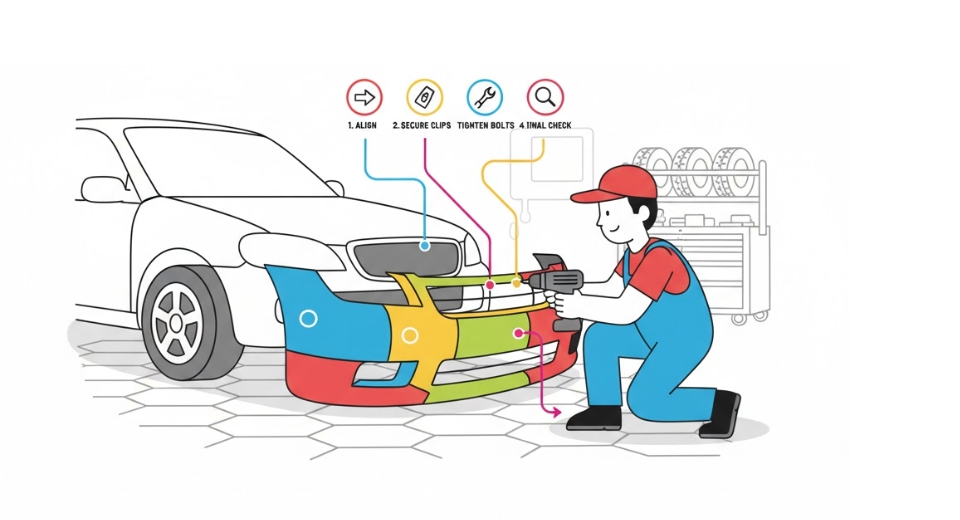
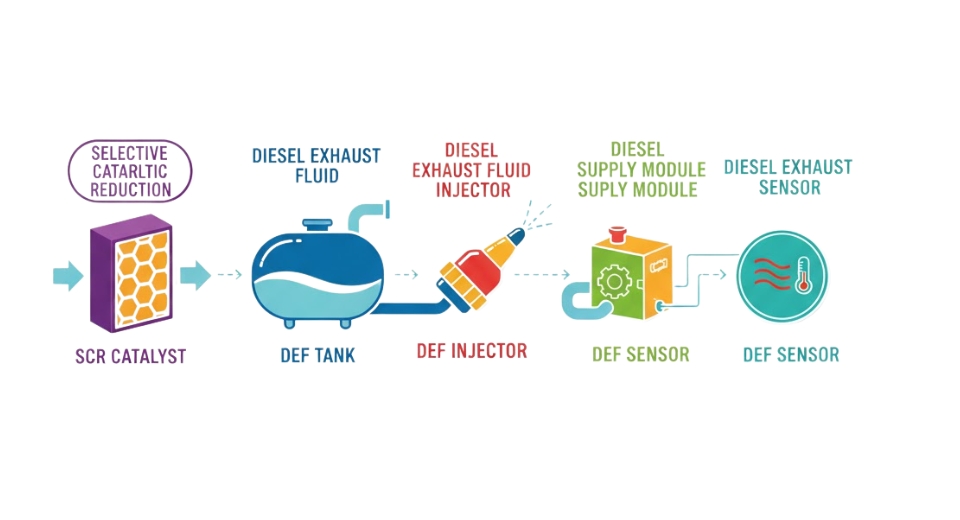
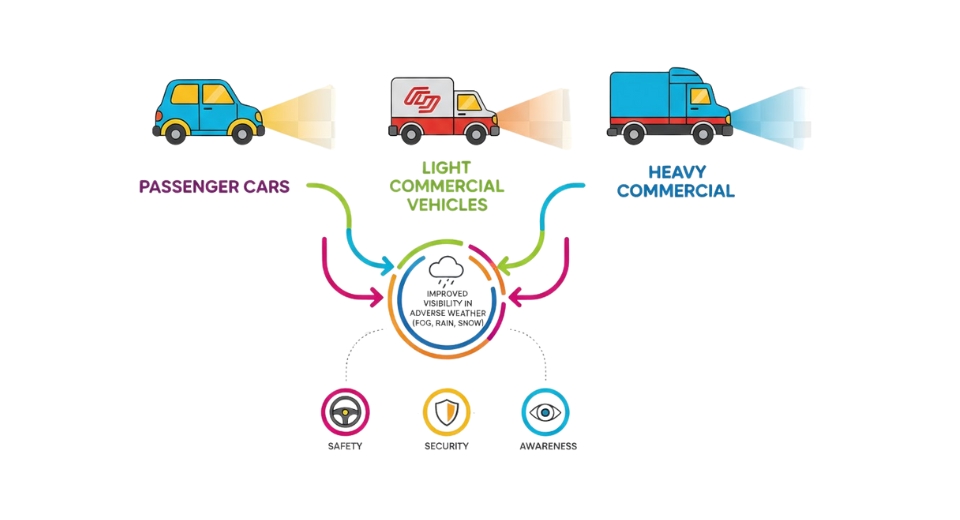


 US: +1 3023308252
US: +1 3023308252






